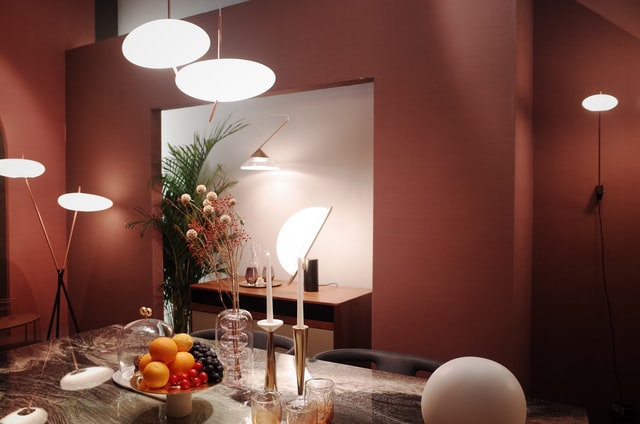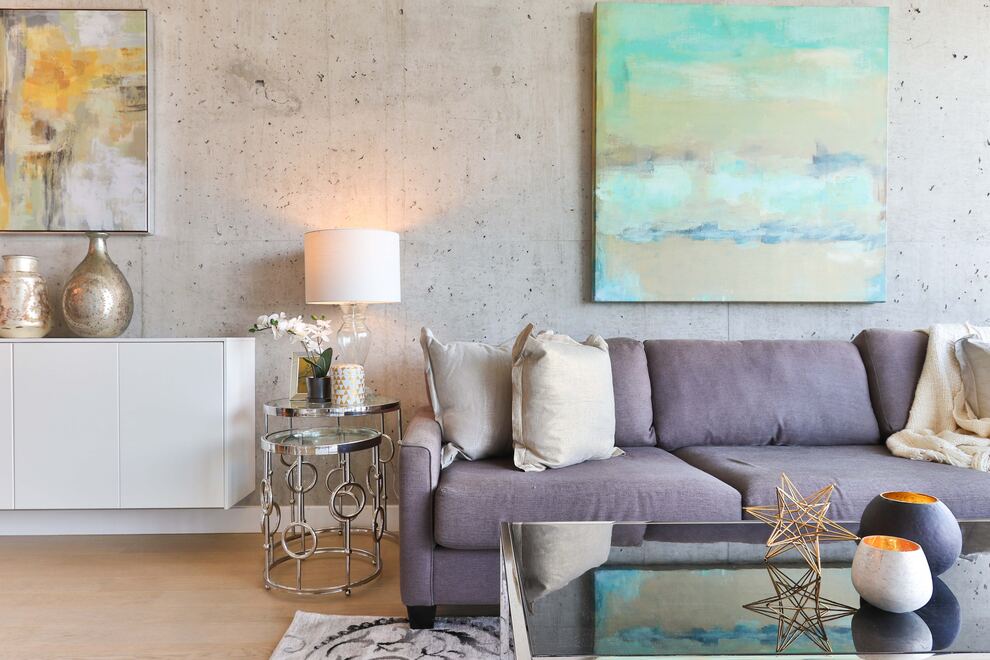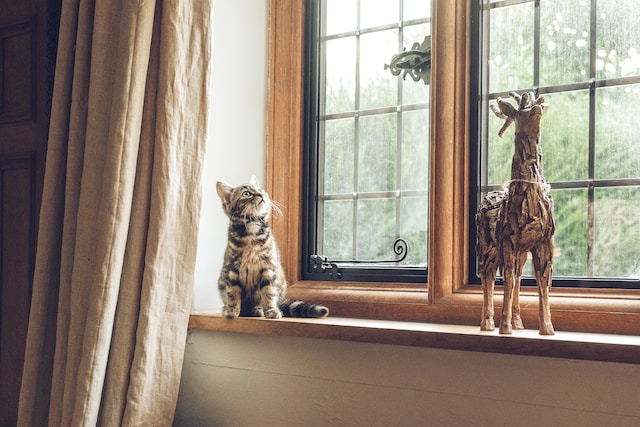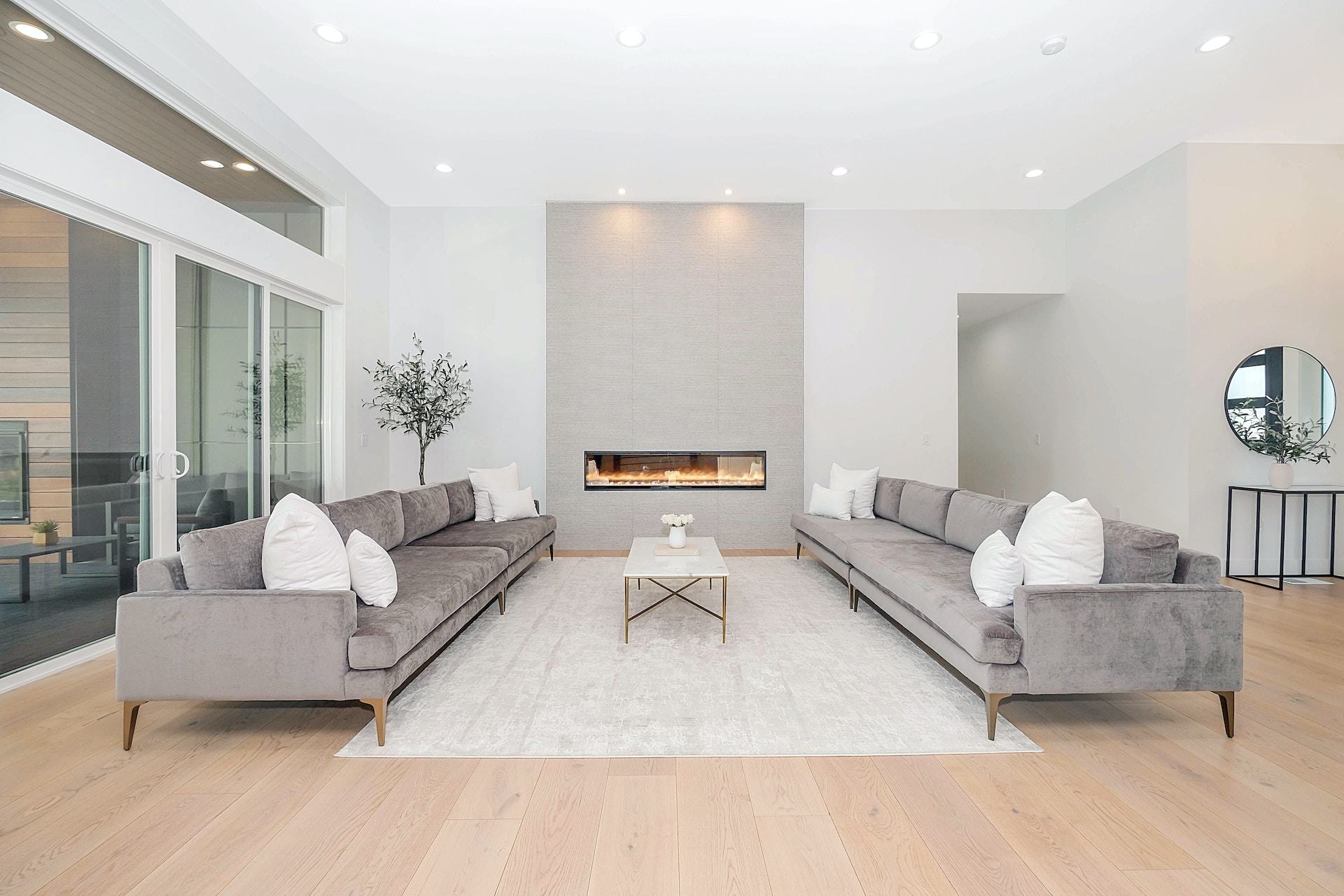Are you feeling dissatisfied with your current home décor, but not sure what needs a change?
Before you swap out the furniture, paint your walls, or upgrade your floors, it’s important to make sure that your current lighting plan is one that complements your home style.
Lighting has the ability to make or break the look and feel of your home. Without the right lighting, focal points, architectural details, unique textures, and even gorgeous colors can get lost.
The key to a good lighting plan is a layered approach that combines four types of light: Ambient, task, accent and decorative lighting. Here’s how to use all four to make your home shine.
Steps for designing your home lighting plan
Before you look for different types of lighting, it’s essential to create a lighting plan in advance. Here are some steps to take that will guide you for your new light design at home.
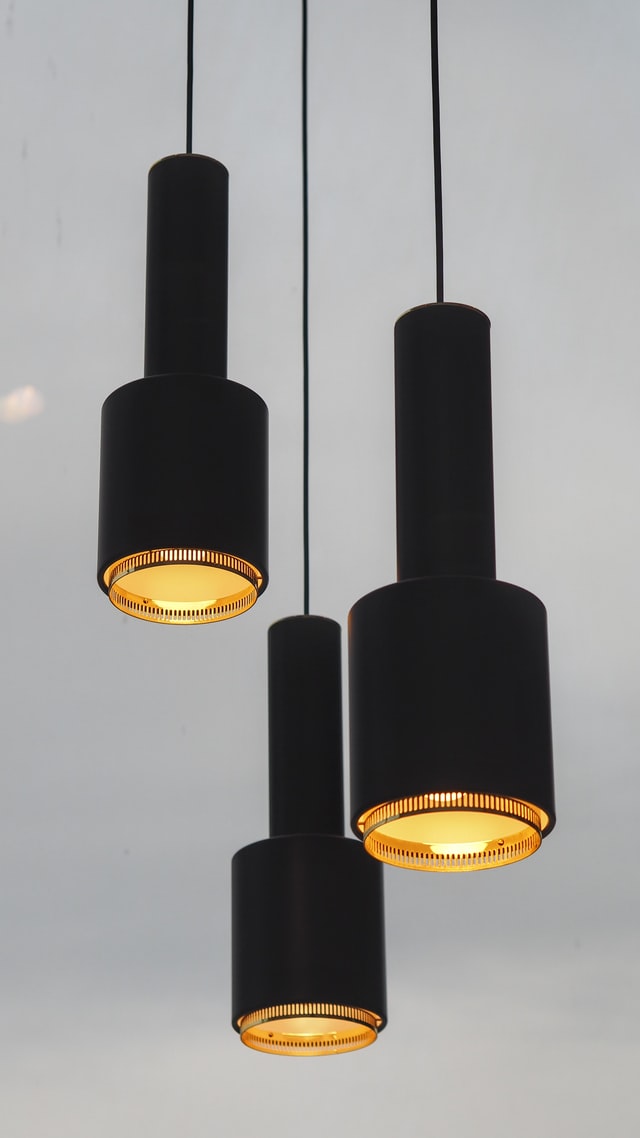
- Set a budget. New light fixtures and accent lighting can add up quickly, so it’s crucial to set a budget before starting your new lighting design. Consider things like how many lights you plan to install, what type you want, and where you plan to purchase them. If you need to hire an electrician, don’t forget to take that into account, too.
- Choose a style. Lighting comes in a myriad of styles that range from modern to industrial and traditional. Think about which type you most prefer, then try to purchase pieces in the same or similar theme, so everything looks cohesive.
- Layer your lighting. To create a home lighting plan, you’ll want to use layers for the best look and functionality. The three main types of lighting are ambient, accent, and task lighting. Each form of lighting serves a purpose and has its role in every room. Once all three layers come together, you can finish with some decorative lighting pieces for a nice finishing touch.
- Pick out a statement piece. One part of your complete lighting plan design should be bolder than the rest if you want it to be a focal point in the room. A decorative chandelier is an excellent way to create a bit of drama in rooms like the dining or living area, for example.
- Think about functionality. Different rooms require different types of light, so it’s vital to choose lighting that will help make the room as versatile and usable as possible. Consider task lighting ideas like installing several pendants over your kitchen island to make chopping and prepping food easier. A light over the sink or an overhead fixture in a laundry room will make household tasks more manageable.
- Measure carefully. When installing new lighting at home, it’s important to make sure that each fixture fits appropriately within the allotted space. Make sure overhead lighting is high up enough that you don’t bump your head when you get up from the dining room table, for example. If you’re adding wall light fixtures, make sure they’re evenly spaced apart from each other once installed.
- Look for energy-saving lights. LED lights are bright, long-lasting, and eco-friendly. Look for new lighting technology and designs that feature energy-efficient options so you can save money every time you turn them on.
- Try multifunctional options. Some new lighting is mobile, which means you can pick it up and use it throughout the home. Table lamps and floor lamps can also easily be moved. Other options include installing switches that will dim the light, change the lightbulb color, or adjust the lighting temperature to give you more options as you need them.
Ambient lighting
Ambient lighting provides an area with overall illumination. Also known as general lighting, it radiates a comfortable level of brightness without glare and allows you to see and walk around without tripping over things. Ambient lighting can be accomplished with chandeliers, ceiling, or wall-mounted fixtures, as well as recessed or track lights. Having a central source of ambient light in all rooms is fundamental to a good lighting plan.
Design tip: For recessed lighting, consider the size of your fixtures to determine appropriate spacing. A common rule is that four-inch fixtures should generally be placed at least four feet apart and six-inch fixtures about six feet apart.
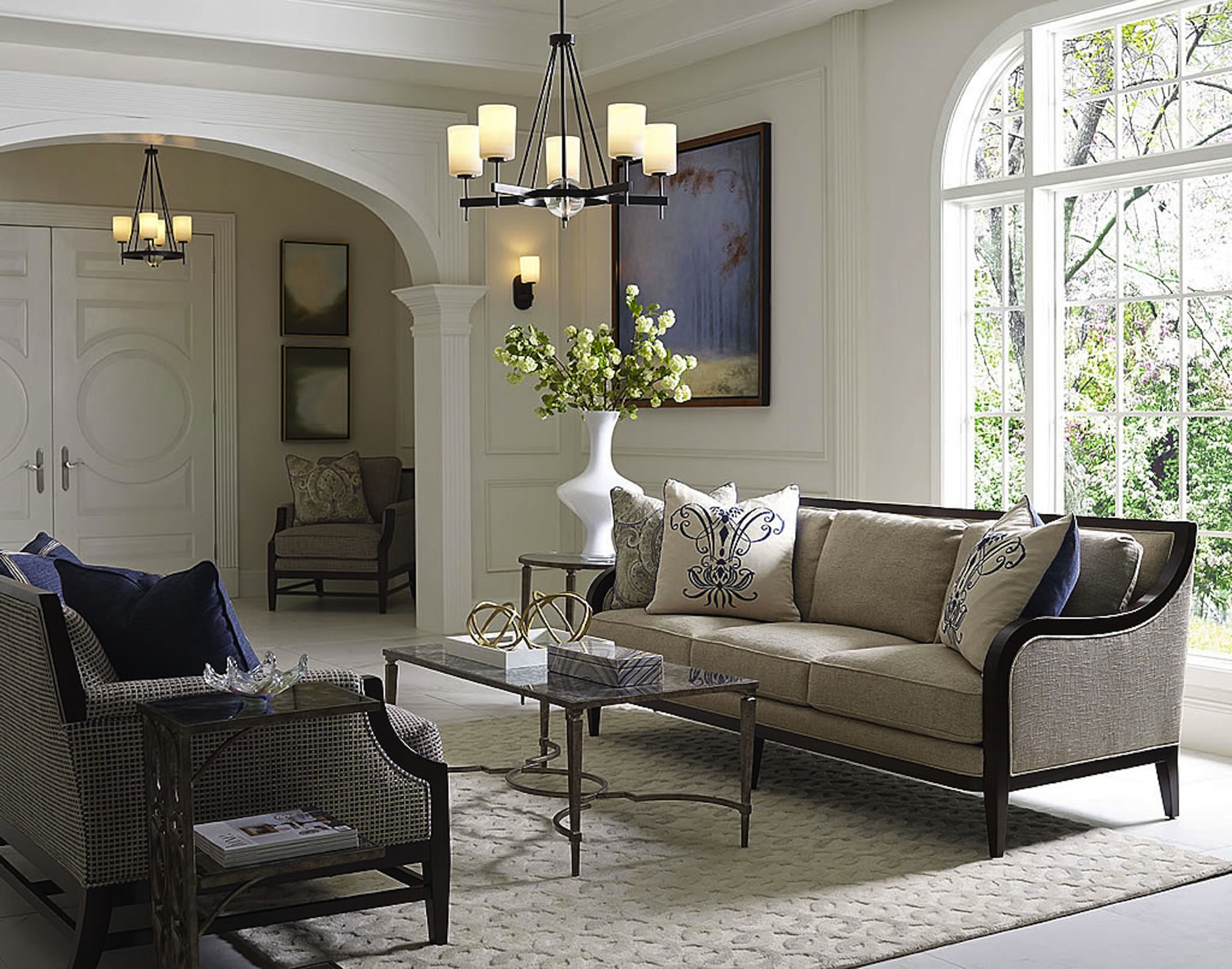
A decorative chandelier or hanging foyer fixture can provide powerful illumination while serving as a beautiful focal point for living areas.
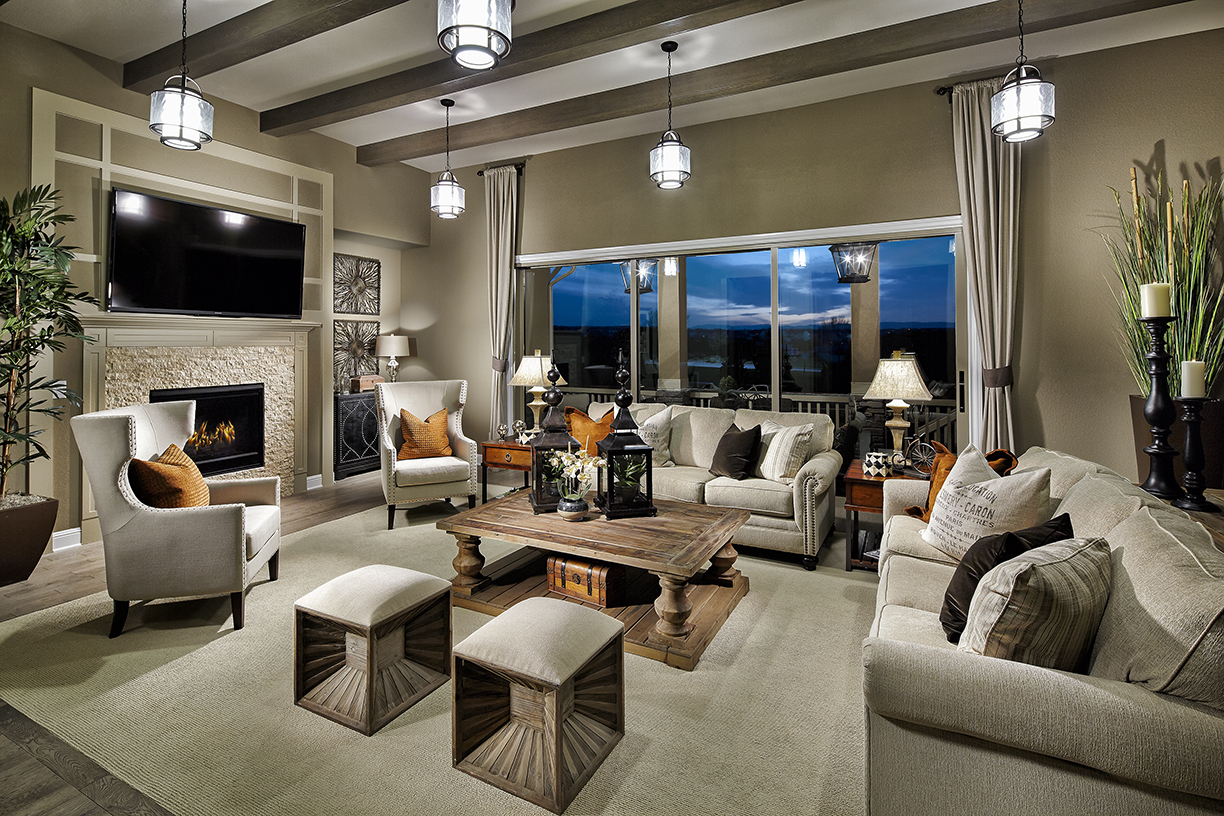
Commonly used for task lighting applications, you can also use pendants for ambient lighting with a bit of creativity. Designer Doris Pearlman with Possibilities for Design used Progress Lighting’s Bay Court pendants to create a stunning spectacle that beautifully lights this great room.
Task lighting
Task lighting helps you perform specific tasks, such as reading, grooming, cooking, or playing games. You can create it with pendant lights, low-hanging track lights, and under-cabinet lighting. Task lighting should be free of distracting glare and shadows while bringing the source of light to exactly where you need it.
When determining the best applications for task lighting, consider the function of the room. What activities will you be performing that require direct lighting? The rooms where task lighting is imperative are the kitchen (where you’ll need counter lighting to enhance kitchen safety when using knives and the stovetop) and the bathroom (where you’ll need adequate light to complete everyday tasks, shaving and putting on makeup).
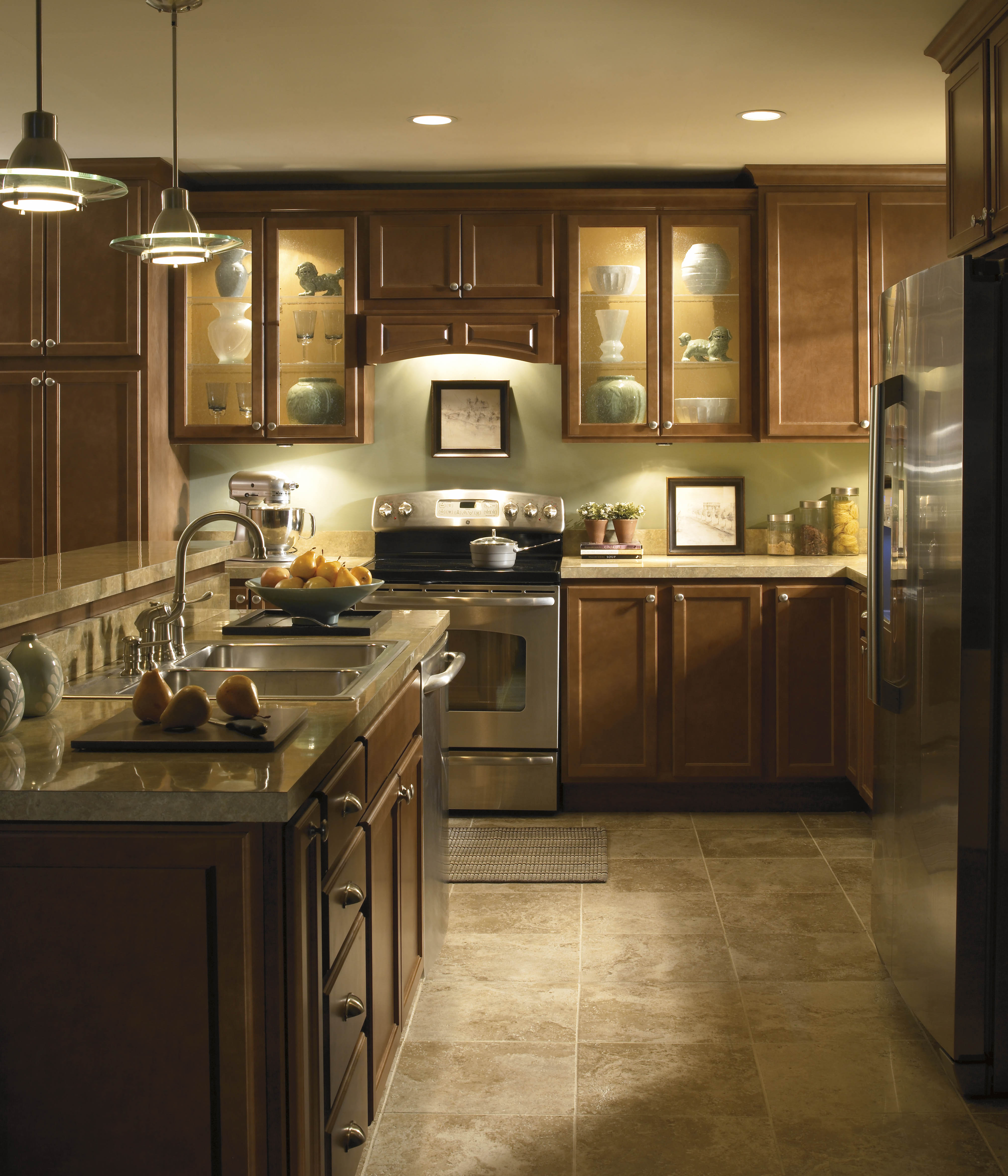
Under-cabinet fixtures are very functional additions for turning your countertops into usable workspaces. Under-cabinet lighting is available in various applications, including LED lights, puck lights, linear lights, and tape lights.
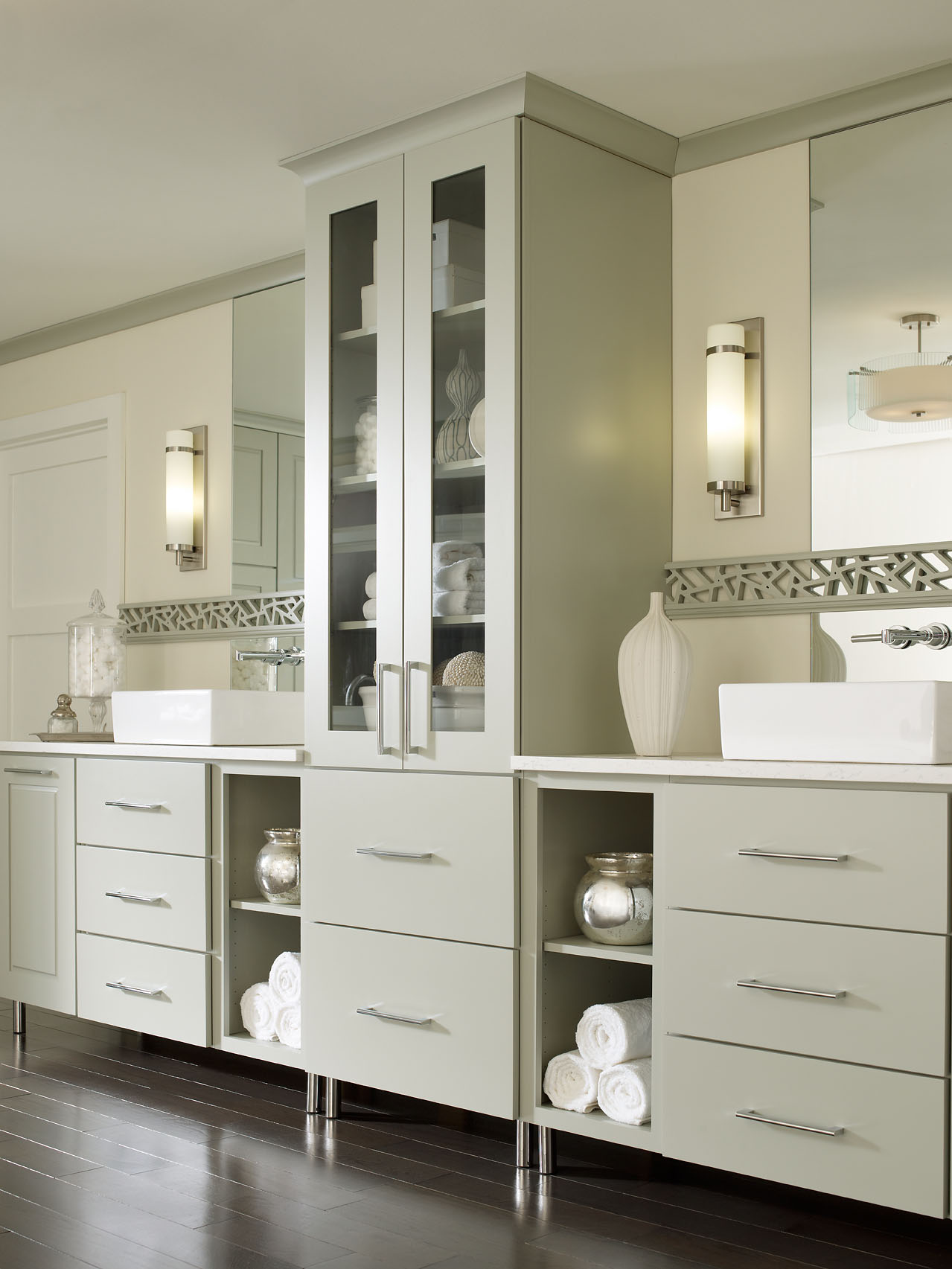
Design Tip: The key to lighting your bathroom is to provide shadow-free task lighting at the mirrors. In addition to an overhead vanity light, add side sconces with a companion close-to-ceiling light to reduce shadows on the sides of your face.
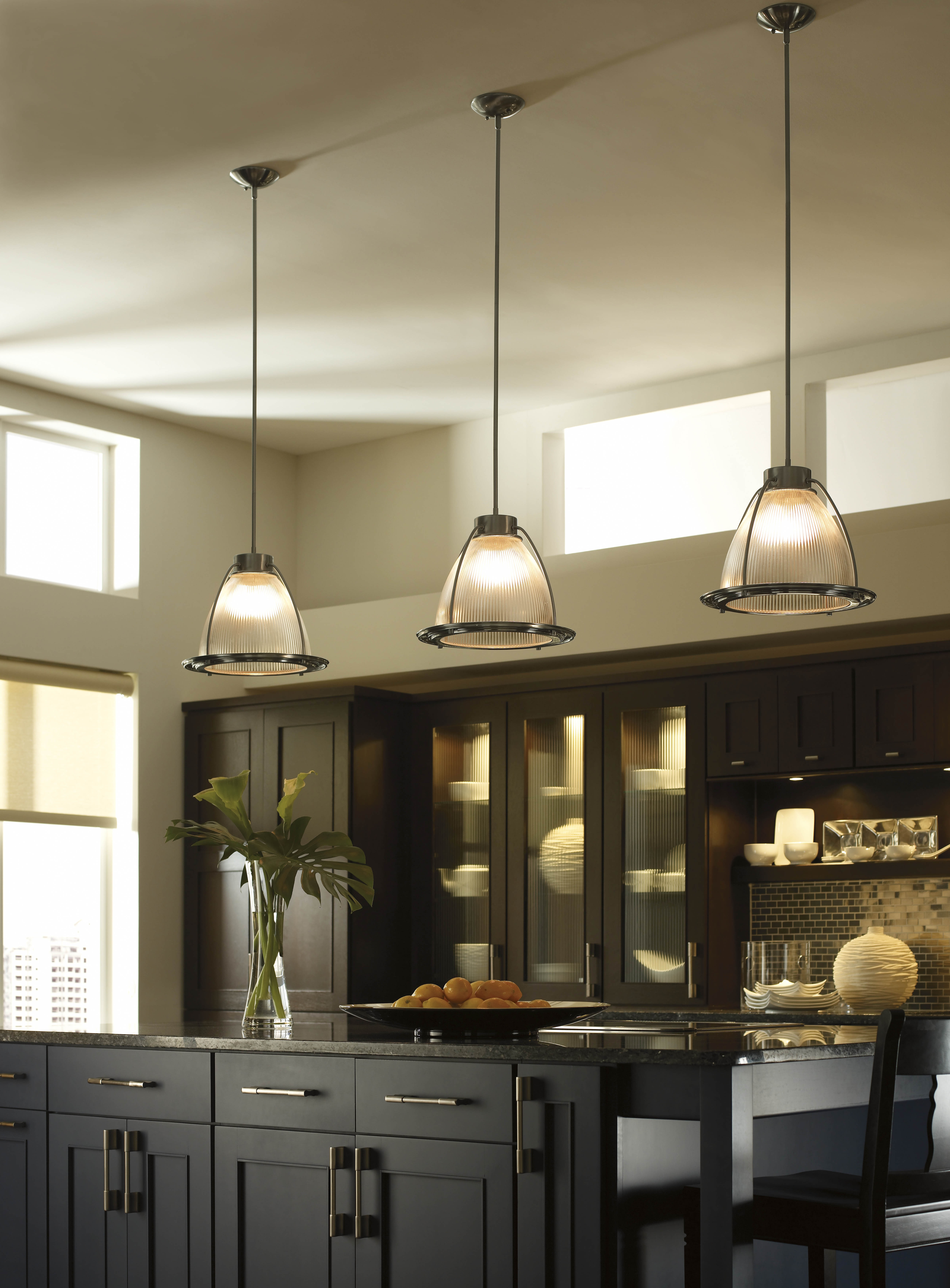
Focus pendant lights on a specific work area, such as over a sink or island. One small pendant may be sufficient for particular task applications. For larger spaces, consider placing pendants in a row at equal heights for a clean, contemporary look.
Accent lighting
Accent lighting adds drama to a room by creating visual interest. As part of an interior design scheme, it is used to draw the eye to key features such as houseplants, paintings, sculptures, and other focal points. Accent lighting can also be used for your home’s exterior to highlight the texture of a brick wall, a window treatment, or a landscaping feature.
Accent lighting requires at least three times as much light on the focal point as the general lighting surrounding it. Accent lighting is usually provided by recessed and track lighting or by wall-mounted picture lights.
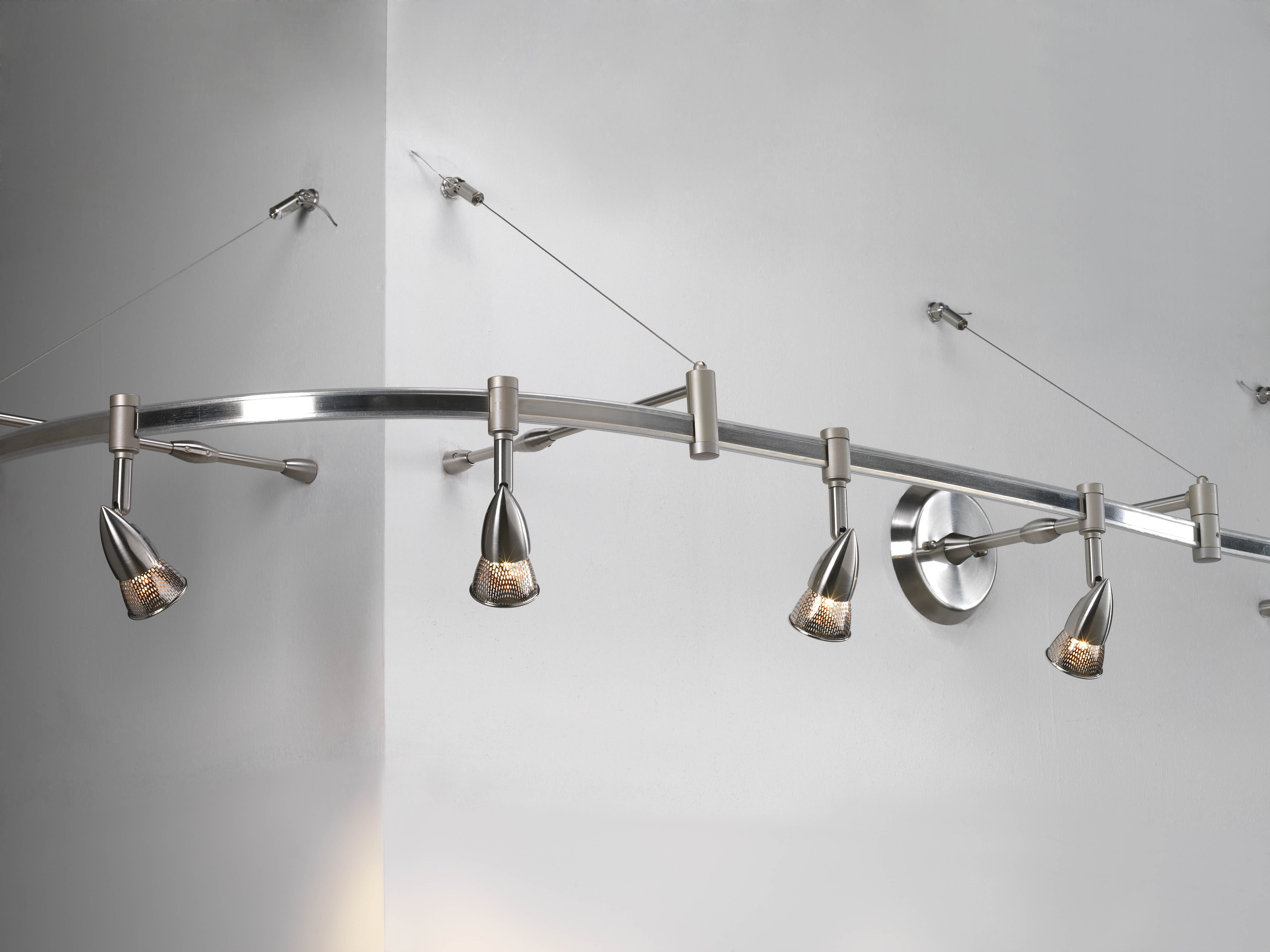
Track lighting with moveable track heads is perfect for highlighting wall art and creating depth to the room layout.
Wall sconces can also be used for accent lighting. Here, a uniquely shaped shade casts exciting details on an otherwise bland wall.
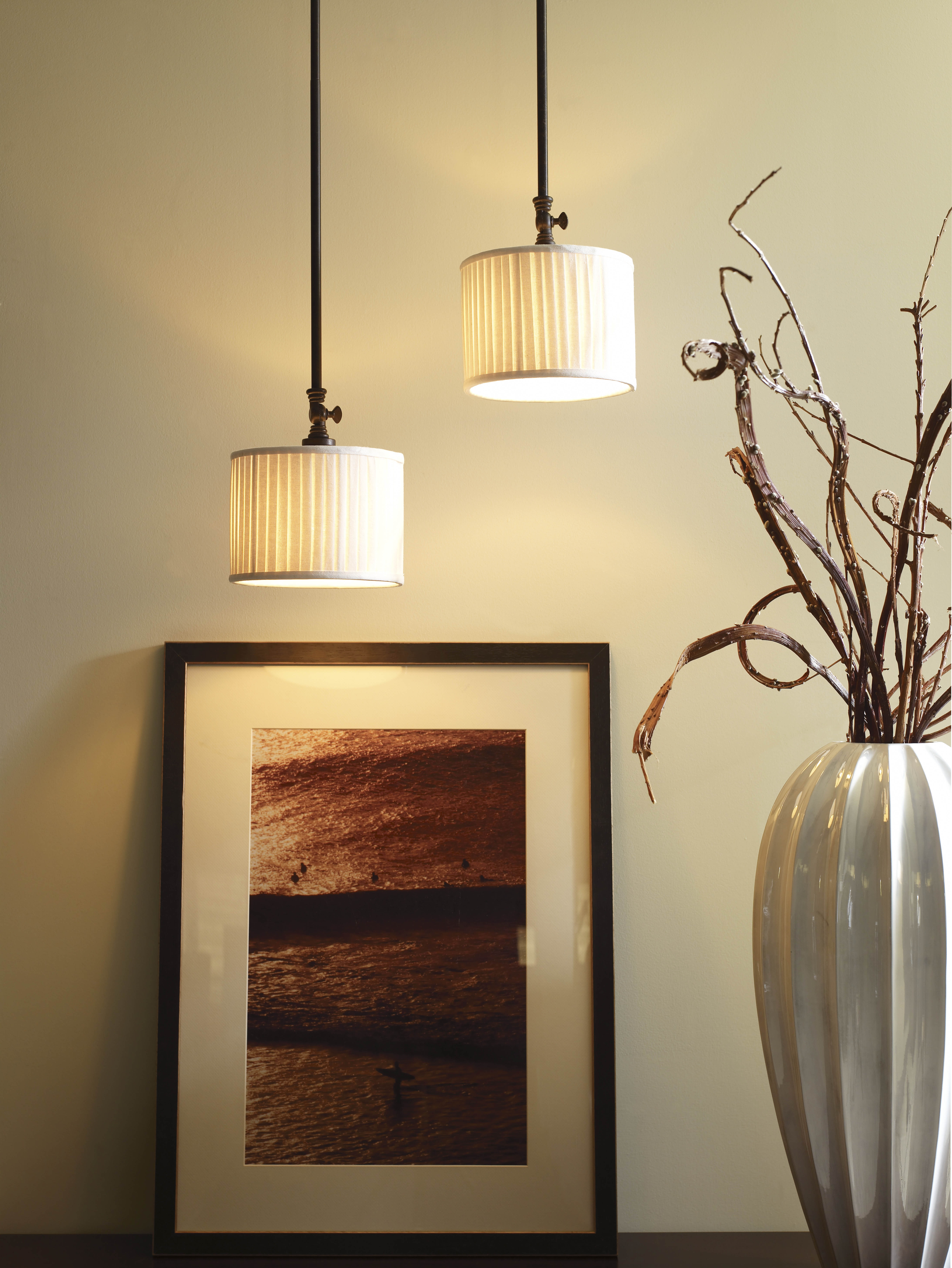
One of the most versatile fixtures, pendant lamps, can be used for accent lighting, especially to highlight favorite pieces on tables and shelves. Select a pendant-style that reflects your décor. Modern pendants made of glass exude sleekness, while a shaded mini-pendant creates a classic look.
Decorative Lighting
While the three main layers of lighting are important, decorative lighting puts the icing on the cake. This type of lighting provides you with an opportunity to add a bold touch that will make your home sparkle and shine. Decorative lighting should be unique, so consider these tips to find just the right style of decorative lights for your home.
Sleek wall sconces installed in a hallway or entryway illuminate your path and give your home a modern vibe.
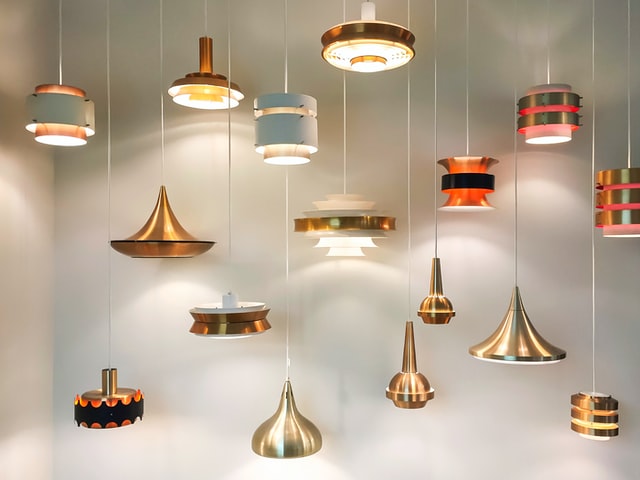

- Pendant lights, which bring lots of decorative flair to a home, have swappable shades to match your taste.
- Mini pendants are an excellent lighting option that can be installed in a foyer or a corner of the room that could use a little extra light or a touch of drama.
- Floor lamps or table lamps with a unique globe, metallic, or colored glass shades add texture and interest to your room.
- Unusual designs, like a horse-shaped lamp base with a faux-horsehair shade, an eight-bulb octopus-shaped lamp, or a light-up globe, are great conversation starters and provide strategically placed lighting for ambiance or reading.
- LED light strips mounted to the wall in an unusual shape will give the room a bright pop and a contemporary touch.
- An antique lamp can be rewired to modern specifications and serve as a focal piece in your room.
- Nothing says decorative lighting, quite like a stunning chandelier. Install a sparkling crystal chandelier to add a touch of glitz and glamor to your favorite part of the home.
- Fans of ultra-modern decor might love a bold Sputnik-style ceiling light or metallic Art Deco sconces along a hallway.
- Flush-mount ceiling lights are much more beautiful when they have decorative elements like a crystal shade around them.
- Pendant lights with a large shade made of woven material like seagrass or rattan are a perfect choice to create a boho-chic-inspired space.
Design tip: Look for decorative lighting featuring a finish you like, then incorporate it throughout the home. A matte black metal finish accented with gold detailing looks sleek and sophisticated for modern and industrial homes alike. The key is to find a few decorative features that suit your design style, then bring that element in with each piece of lighting you install so that everything is seamless.
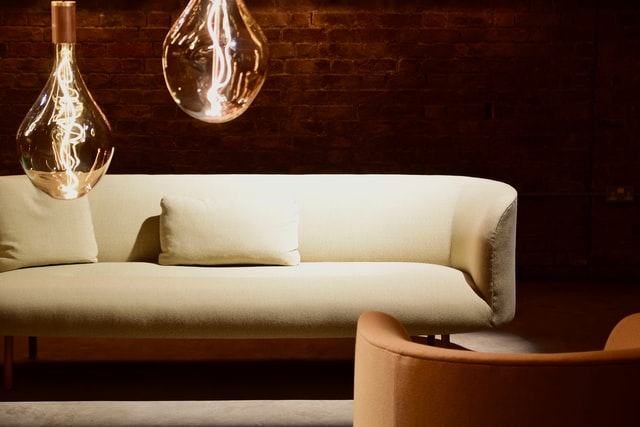
Decorative lighting is what gives your home personality. A utilitarian light simply works to illuminate an area, while decorative lighting has unique and ornate features that bring your decor together. After you’re done planning your home lighting design, look for light fixtures that will really add a dramatic component to each room.
Depending on the application, the same type of fixture can fit all four categories of lighting. Don’t be afraid to think outside of the box and move away from traditional molds to create a layered lighting plan. Try a chandelier in the bathroom, pendants in the living room, or a recessed fixture in the shower. The most important thing is that you love the layout and design of your home and perform everyday tasks with simplicity and ease.
